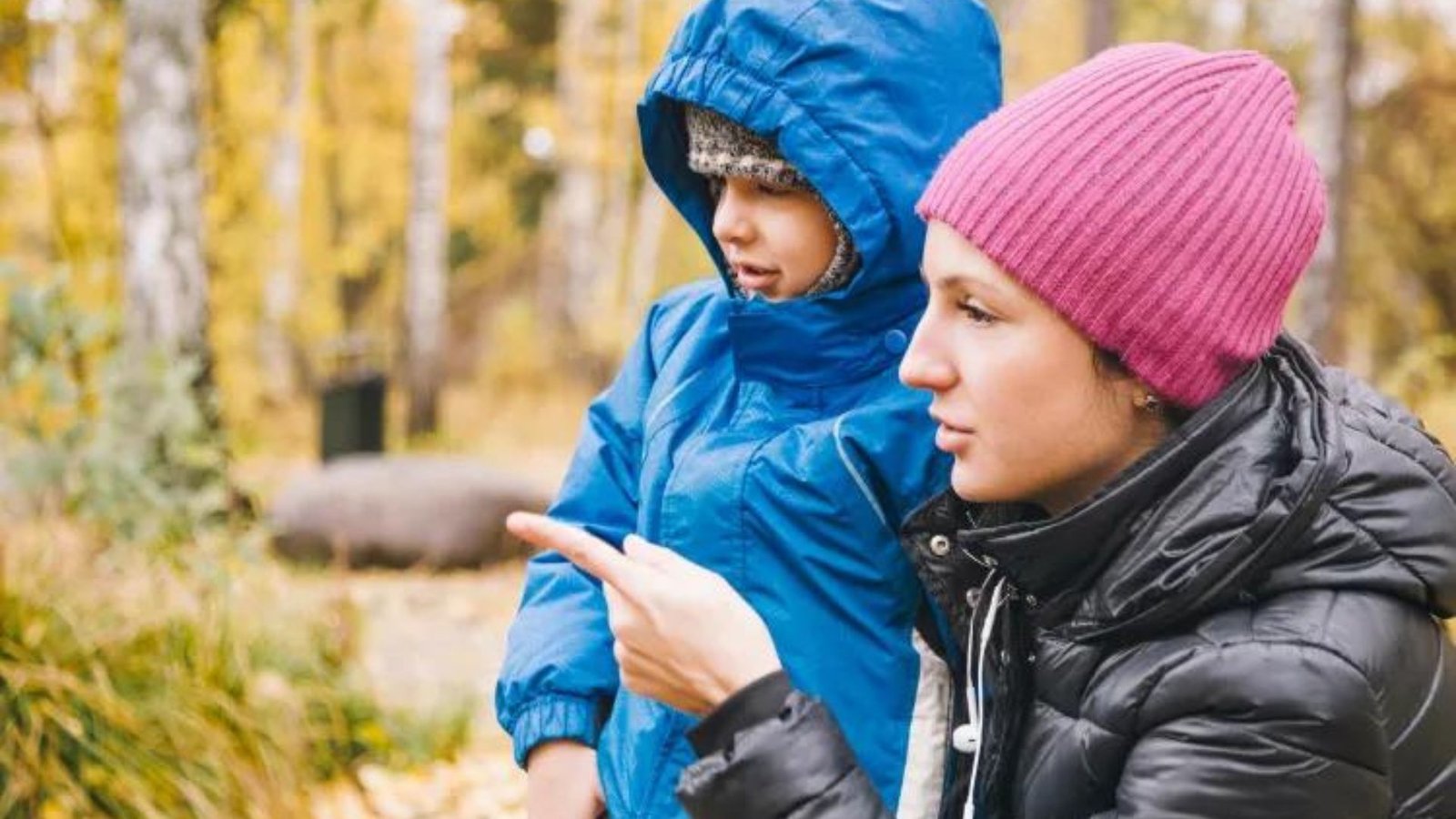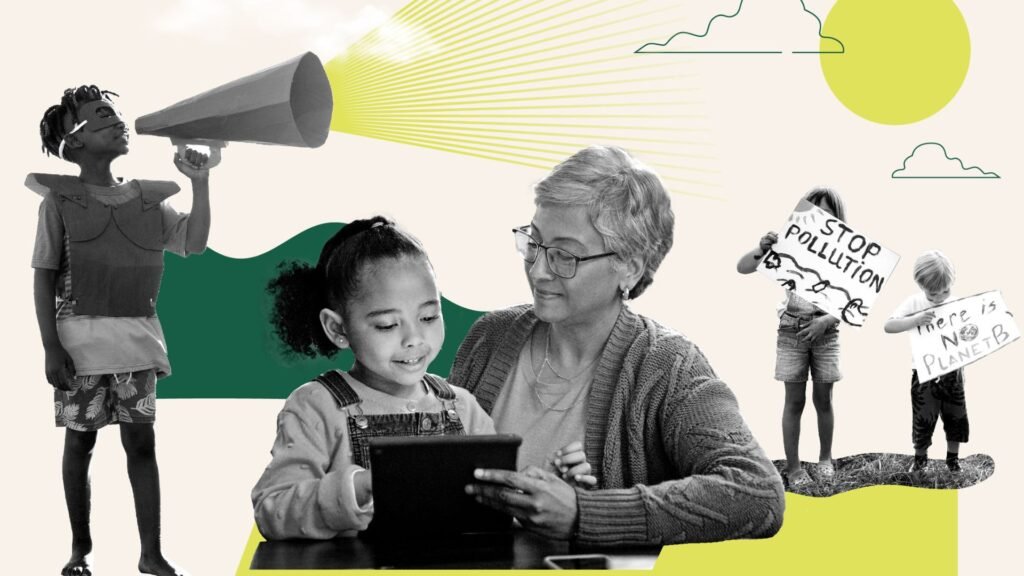Discussing climate change with children can be challenging, but it’s essential to help them understand the importance of protecting our planet. By approaching the topic with care, honesty, and age-appropriate information, you can empower children to feel hopeful and take positive action. Here’s how to talk to children about climate change effectively.

Start with Simple Concepts
Introduce the basic ideas of climate change in a way that children can easily understand. Begin with the concept of the Earth as a home for all living things and explain how our actions can affect the environment.
- The Earth as a Home: Explain that just like their home needs to be cared for to stay clean and safe, the Earth needs care to stay healthy for all living creatures.
- Weather vs. Climate: Help children understand the difference between weather (daily changes) and climate (long-term patterns). Explain that while weather can change from day to day, climate change refers to changes in the Earth’s climate over a long time.
Use Age-Appropriate Language
Tailor your conversation to the child’s age and level of understanding. Younger children need simple explanations, while older kids can handle more detailed information.
- For Young Children (Ages 4-7): Use basic terms and focus on the idea of taking care of the Earth. You might say, “The Earth is getting warmer because of things people do, and that can make it harder for animals and plants to live.”
- For Older Children (Ages 8-12): You can introduce more complex concepts, like greenhouse gases and pollution. Explain how activities like driving cars and cutting down trees release gases that trap heat in the Earth’s atmosphere.
Encourage Questions
Invite children to ask questions and express their thoughts. Answer their questions honestly but reassure them by focusing on solutions and positive actions.
- Be Open to Questions: Let children know it’s okay to ask anything. Answer honestly, but avoid overwhelming them with too much information at once.
- Focus on Solutions: If a child expresses worry, redirect the conversation towards what people are doing to help and how they can be a part of the solution.
Use Stories and Analogies
Stories and analogies can make complex topics more relatable. Use examples from everyday life or favorite stories to explain the impact of climate change.
- Storytelling: Create a story where the Earth is a character that needs help to stay healthy. Explain how small changes, like planting trees or recycling, can make a big difference.
- Analogies: Compare the Earth to a garden that needs the right amount of sun, water, and care to grow. Explain that climate change is like giving the garden too much sun or not enough water.
Empower Them with Actions
Children feel more secure when they know they can do something to help. Teach them small, practical actions they can take to make a difference.
- Recycling: Explain how recycling helps reduce waste and conserves resources. Involve children in sorting recyclables at home.
- Saving Energy: Teach children to turn off lights when not in use and unplug devices. Explain how saving energy helps reduce the impact on the environment.
- Planting Trees: If possible, involve children in planting trees or creating a garden. Explain how plants absorb carbon dioxide and provide oxygen.
Be Honest but Reassuring
It’s important to be truthful about the challenges of climate change, but balance this with reassurance that there are many people working hard to solve these problems.
- Acknowledge the Problem: Be clear that climate change is a serious issue, but also emphasize that people around the world are working on solutions.
- Provide Hope: Share stories of environmental heroes, young activists, and successful conservation efforts. Highlight that positive change is possible.
Involve Them in Environmental Activities
Get children involved in environmental activities that help them feel like they are part of the solution. Participation can reinforce what they’ve learned and make the issue more tangible.
- Community Cleanups: Participate in local cleanup efforts. Explain how picking up trash helps keep natural habitats safe and beautiful.
- Nature Conservation: Visit national parks, wildlife reserves, or botanical gardens to teach children about the importance of preserving natural spaces.
Lead by Example
Children learn a lot by observing the actions of adults. Show them that you care about the environment through your own choices and behavior.
- Practice What You Preach: Make environmentally friendly choices in your daily life, such as reducing waste, conserving energy, and supporting sustainable products.
- Involve Them in Decisions: Include children in decisions about how your family can be more environmentally conscious, like choosing to walk instead of drive or reducing plastic use.
Keep the Conversation Going
Talking about climate change shouldn’t be a one-time discussion. Keep the conversation ongoing as children grow and their understanding deepens.
- Regular Check-Ins: Periodically revisit the topic to answer new questions and discuss recent developments. This keeps children informed and engaged.
- Stay Informed Together: Learn together by reading books, watching documentaries, or following news about climate change and environmental protection.
Conclusion
Talking to children about climate change is a vital step in raising environmentally conscious individuals. By using simple concepts, age-appropriate language, and encouraging positive actions, you can help children understand the importance of caring for the planet. Leading by example and involving them in environmental activities will further reinforce their learning and inspire a lifelong commitment to protecting the Earth.

